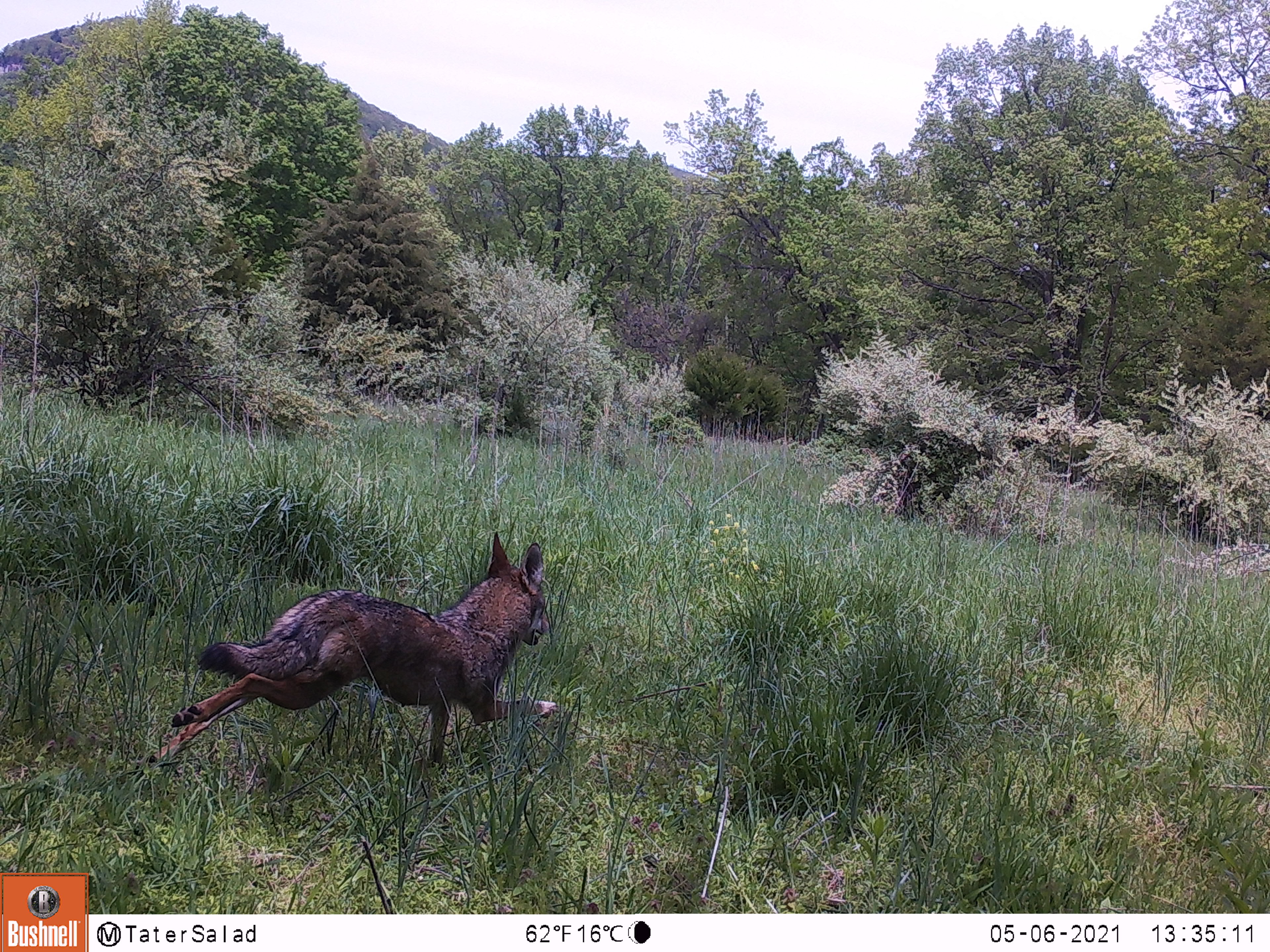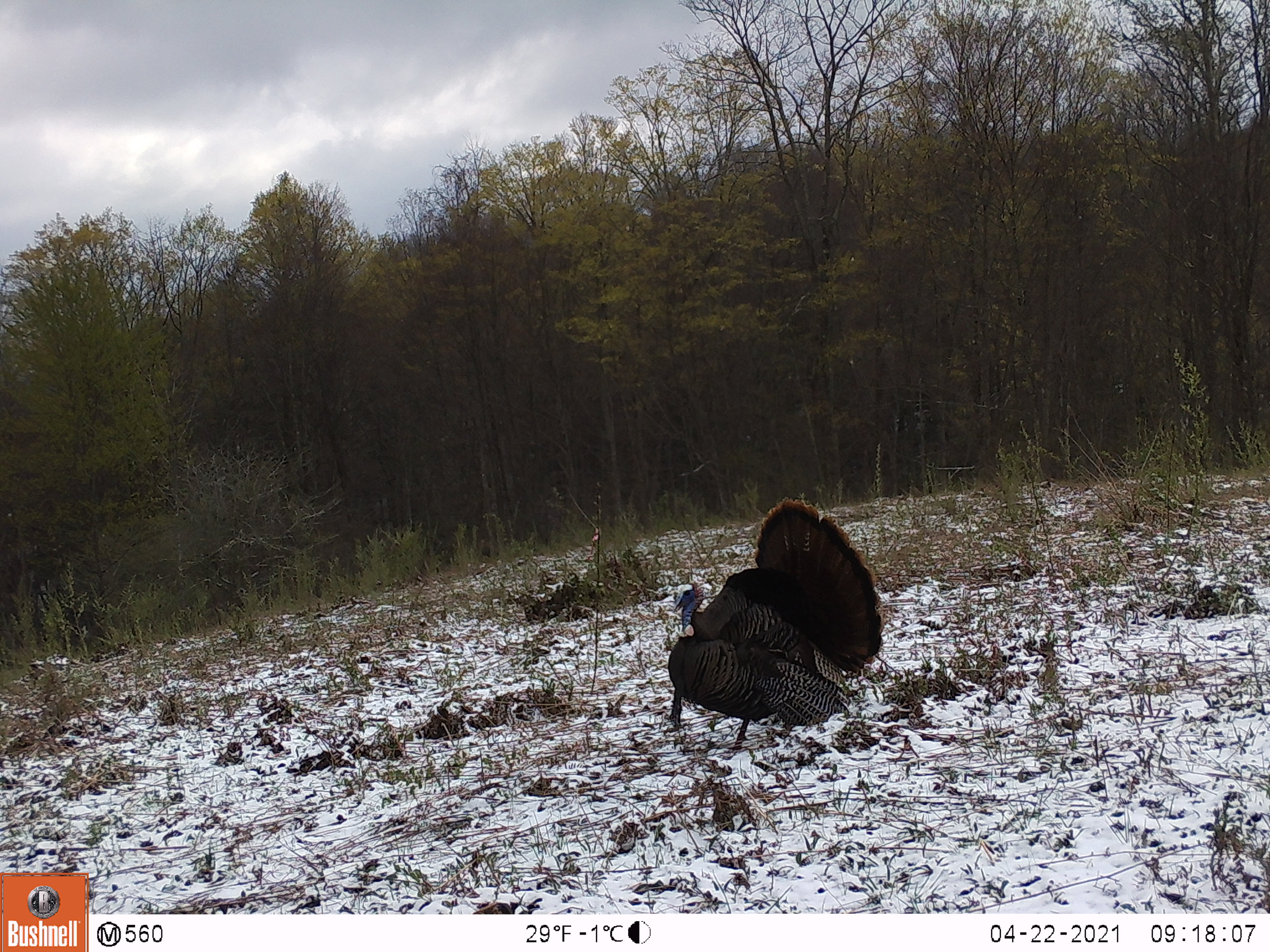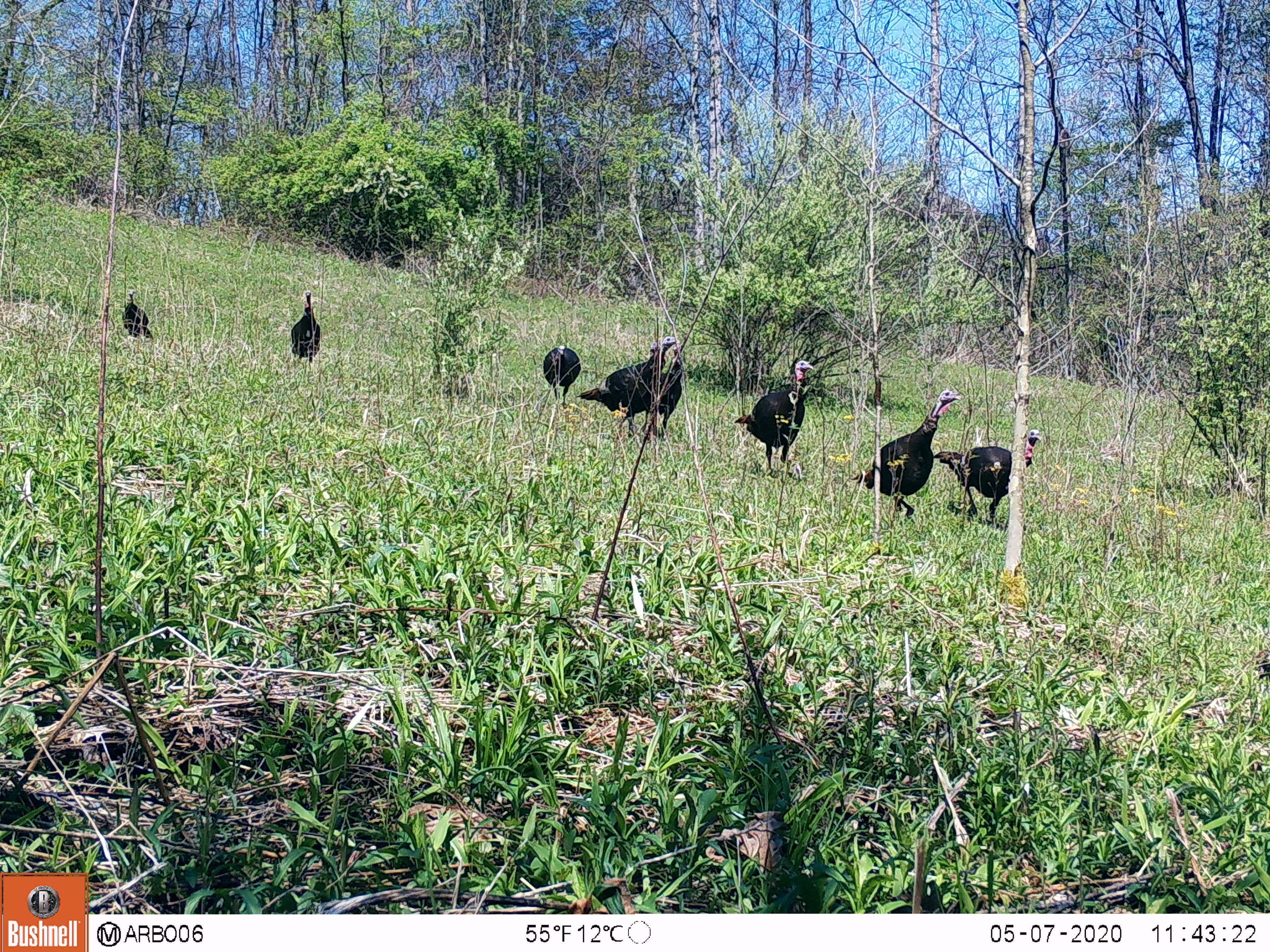Monongahela National Forest Wildlife Openings
This project involved deploying game cameras in wildlife openings throughout the Monongahela National Forest in eastern West Virginia from mid-April to mid-May in 2019-2021. The purpose was to detect game birds using the wildlife openings and relate their presence to opening size, local habitat characteristics, management regimes, and landscape context.
This research was conducted as part of a Ph.D. dissertation project at West Virginia University. Game cameras were deployed in wildlife openings throughout the Monongahela National Forest in eastern West Virginia from mid-April to mid-May in 2019-2021. A single game camera was deployed for 7-8 days in each wildlife opening during the overall sampling period. Target species were three regionally important game birds: wild turkey, ruffed grouse, and American woodcock. The purpose of this aspect of the study was to examine game bird use of wildlife openings in relation to opening size, local habitat characteristics, management regimes, and landscape context.
This research was conducted as part of a Ph.D. dissertation project at West Virginia University. Game cameras were deployed in wildlife openings throughout the Monongahela National Forest in eastern West Virginia from mid-April to mid-May in 2019-2021. A single game camera was deployed for 7-8 days in each wildlife opening during the overall sampling period. Target species were three regionally important game birds: wild turkey, ruffed grouse, and American woodcock. The purpose of this aspect of the study was to examine game bird use of wildlife openings in relation to opening size, local habitat characteristics, management regimes, and landscape context.




